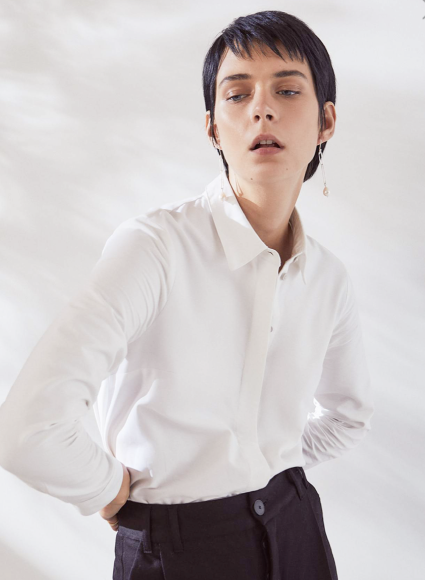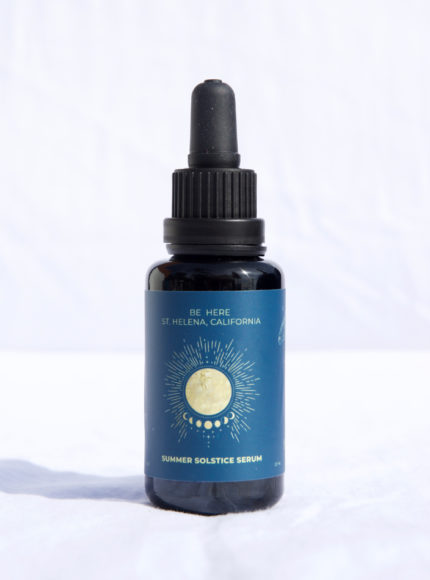


Our co-founder Cora planting bee friendly seeds on her terrace.
Food & Garden
How to Create a Bee & Butterfly Friendly Pollinator Garden At Home
Here’s the first in our Home Garden Series, and this week we are looking at butterflies and bees to explore and better understand our natural world and how we can make a pollinator garden so can preserve it. Over the coming weeks and months, our Food and Garden Editor, Robert, will be sharing with us lots of ideas and different approaches towards sustainable gardening for both the wildlife and our kitchens. To start with we shall be looking at how to create a butterfly and bee garden in a pot.
The Importance of Bees & Butterflies
At REV, taking care of our environment is one of our greatest motivations; we are guided by our awareness of Mother Earth and by our comprehension that we must promote its welfare for humanity and posterity’s sake. One should constantly be in the search for accessible and simple ways to realize this vision. “Sustainability” and “environmental awareness” often sound like detached buzzy words but they don’t have to be. We can all gradually adopt small habits and routines that will truly make us and our lifestyle sustainable, and collectively, we can bring a green future to fruition.
So with this in mind, I thought that we should start with creating a mini pollinator garden in a pot. This can be done easily on a window sill, balcony or garden.
Butterflies are not just beautiful creatures, they hold a leading and crucial role in our natural ecosystems, one that we can’t do without and in fact their survival and wellbeing is very much intertwined with our own (in addition, they also serve as sustenance for other species, and are even studied by naturalists in order to measure environmental changes, as butterflies are sensitive to any changes in their ecosystems). Butterflies and bees alike are both plant pollinators, their unique roles ensure a balance is kept in their food chains and to equilibrium of the natural environment.
Butterflies and bees are vital members of our world’s natural ecosystem.
However, sadly these days they urgently require our support, which can be simply extended by providing green havens for them to feed and hang out, as well as to procreate. Creating such a green playground for them can make all the difference, while adding some more beauty to our home and to our lives. Butterflies need nectar (found in flowers) as a food source enabling them to fly and look as fabulous and seductive as they can possibly be in their quest for mates and producing their next generation. Bees need pollen for their babies – whilst playing a major role in the fertilisation process of all our fruit, flowers and vegetables. To give a big boost to these wonders of the natural world we can create for them that colourful and nutritiously rich haven in a pot and below you will find suggestions on how to achieve just this.
Putting together a pollinator garden can be as simple as a beautiful pot of plants that also provide some glorious summer colors. This creates a wonderful food source for bees and butterflies couldn’t be simpler – there are just a few things you need – one big pot, a bag of peat free compost and some bee and butterfly food plants.
What You Will Need
Large pot or trough or an old wheelbarrow.
Bag of peat free compost.
Tray of plants or a bag of butterfly and bee seed (we shall refer to it as the “container”).
Flowering plants, such as Lavender, Thyme, Borage, Goxglove and Verbena, are all superbly rich in nectar.
See a supplier I like to use here.
The Method
Step 1: Fill ⅔ of the container with the compost. Water well (approx 3 litres). Then take all the plants out of their pots, teasing out roots if they are wrapped tightly.
Step 2: Now to the fun bit, be creative and place all the flowers/plants in groups as you desire. For example, tallest flowers at the back and the ones that spread out with trailing flowering at the front. If you have plants in biodegradable pots you do not need to remove the pot, if using a non-biodegradable pot however (such as plastic or cardboard) make sure to remove the plant out of the pots. Then plant according to your preferred layout, then fill the container with compost to its rim, making sure to fully bed down each plant with 1cm of compost.
Step 3: Place in a sunny spot (if possible) and keep well watered – once every 2 to 3 days. Do check to see that there is a nice layer (at least 1cm) of compost bedding down all plants (add more if required). Keep the plants well watered throughout the coming months and once flower heads have gone over make sure to snip them off, to promote continual flowering for the butterflies and bees to enjoy.
From Seed: Fill the pot with compost and water well until compost is moist to touch. Then scatter the seed evenly across the compost, and then sprinkle another thin layer of compost on top (it’s what they call “dusting”). Make sure the compost is kept moist and doesn’t dry out.






















